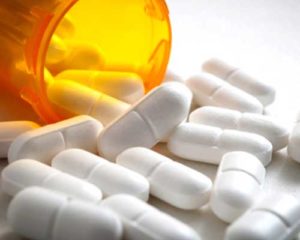Throughout the past few decades, we’ve seen fatal problems in the United States reach alarming peaks before declining. In 1972, fatal car accidents exceeded well over 50,000. In 1993, nearly 40,000 lost their lives to gun violence. In 1995, more than 45,000 died during the HIV epidemic. However, in 2016, overdose deaths surpassed them all when they exceeded 65,000, according to The New York Times. Overdose death rates have more than doubled in just 10 years. During that time, drug overdose became the number one killer of people under the age of 50.
Opioids are by far the biggest culprits in the overdose epidemic, and new synthetic versions have caused the most recent exponential spike. Statistically, it’s likely that you know someone who has struggled with addiction and you may even know someone who’s gone through an overdose.
Opioids have been used as pain relievers throughout the 20th century. However, they are also powerfully addictive, and, when they are abused, they can cause dangerous overdoses. New opioids have entered both legal and illicit drug markets that are powerful enough to cause a fatal overdose in tiny amounts when misused.
Because the overdose epidemic is growing with no signs of stopping anytime soon, it’s important for you to know what happens in an opioid overdose, and what you can do if you encounter one in someone else or even yourself.
Learn more about what causes an opioid overdose and how you can stop it.
Opioid Overdose Symptoms
An opioid overdose may be difficult to spot in another person unless you know the signs. Heroin and other opioids cause you to relax and, in many cases, users will lie back and close their eyes. However, when they become unresponsive, it could be a red flag. Opioids can cause symptoms to appear in what is known as the opioid overdose triad, which refers to three symptoms that are common in most overdose cases, including:
- Dilated pupils, often described as pinpoints
- Unconsciousness, or slipping in and out of consciousness
- Respiratory depression, which is slowed or stopped breathing
When you take opioids, the chemicals bind to opioid receptors in your brain and body. These receptors are designed to attach to your own, naturally occurring chemicals that cause pain relief and relaxation, called endorphins. However, opioids like heroin and fentanyl are much more powerful than the naturally occurring versions, and they can cause euphoria and other effects in the nervous system.
During an overdose, the body has been flooded with so much of the drug that the nervous system slows down to dangerous levels. The user may become unresponsive and find it difficult to stay awake. It also slows down your body’s breathing response. It’s not fully known why opioids stop your breathing, but one theory is that it hinders your autonomic nervous system, the part which controls automatic functions like breathing, heart rate, blood pressure, and other things. Your body is unable to tell that there is a buildup of carbon dioxide in your lungs, which would normally trigger a breathing response.
If you or someone you know is struggling to maintain consciousness or if they have started to breathe extremely slowly, it may be signaling an overdose.
Is Opioid Overdose Fatal?
Opioid overdose can range from medically dangerous to outright deadly, depending on a number of variables like the amount of an opioid you’ve taken, the type of opioid it was, and your size, sex, and age. If you’ve only taken a little more than you can safely handle, it still poses a potentially fatal threat but quick medical intervention can save your life. If you take an extremely high dose, or if your hit was spiked with a highly potent drug like fentanyl, you may experience fatal symptoms more quickly. In some cases, it takes multiple effective doses of the overdose-reversing drug naloxone to revive a person that’s taken a high dose.
“Opioids are some of the deadliest drugs in the world, causing a large proportion of opioid overdose deaths worldwide. Because of their ability to stop your breathing, they are more dangerous than a variety of other legal and illegal drugs during an overdose.”
According to the World Health Organization, there are a number of risk factors that can increase your likelihood of experiencing a fatal opioid overdose, including:
Risk Factors That Increase Likelihood Of Overdose
- Opioid dependence or addiction
- Injecting opioids intravenously (typically more potent)
- People who abuse prescription opioids
- People who combine opioids with other drugs
- People who suffer from co-occurring medical and psychological disorders
- Other people in a household of someone who is in possession of opioids
If you or a loved one is at risk for an opioid overdose, it’s important to seek help immediately. The faster you address an opioid use disorder, the more likely you are to avoid potentially deadly consequences of addiction.
Why Are More People Overdosing?
Opioids are everywhere, and many people are placing the blame at the feet of large pharmaceutical companies. In fact, over 100 counties have set up to sue “Big Pharma” for the burden drug addiction, and overdose has placed on their economies. In some places around the country, overdoses are constant. According to the Netflix documentary Heroin(e), which follows, Jan Rader, a fire chief in Huntington, West Virginia, the city sees as many as 26 overdoses per day.

These counties have turned to pharmaceutical companies for understandable reasons. Sales of prescriptions opioids havequadrupled from 1999 to 2014, according to the CDC. However, there has also been a large influx of illegal opioids from transnational criminal organizations like Mexican drug cartels. In the U.S. Drug Enforcement Administration’s 2017 National Drug Threat Assessment, officials point out that opioids are coming to the country from Mexico and China over land and by sea.
Among these opioids are potent synthetic drugs like fentanyl, which is 100 times more powerful than morphine and 50 times more powerful than heroin. Fentanyl is cheaper, easy to make, and easier to transport than heroin because it can be moved in smaller amounts. Because it’s cheaper, it often finds its way into heroin without users knowing it’s there.
The combination of the increase in legal and illegal opioid availability and the influx of this deadly powerful opioid has led to an increase in both addiction and overdose deaths.
How to Respond to Opioid Overdose
Opioid overdose is becoming increasingly common. Every year, your likelihood of encountering an overdose grows with the rising addiction and overdose rates. For that reason, it’s important to know what to do in an emergency situation that involves an opioid overdose. Knowing that you know how to recognize an overdose, here are some of the things that you can do to potentially save someone’s life.

In an emergency situation, the steps for dealing with an opioid overdose are fairly simple, but it’s important that you act quickly. The following are steps you should take when you see signs of an overdose:
- Assessment: First, it’s important to assess the situation to determine if the person is breathing or responsive. You can test this by shaking them and shouting their name. Are they showing signs of a lack of oxygen like blue lips or fingertips? If they do not respond, you can try to wake them by rubbing your knuckles on their sternum (middle of their chest), which can cause a jolt of pain without doing much damage. Check for slowed breathing and dilated pupils.
- Call for help: Calling an ambulance or for help from a trained professional is the safest course of action if the person is still unresponsive. Another medical condition may be mimicking opioid overdose symptoms, or a secondary condition may be occurring that needs immediate medical help.
- Administer naloxone: If the person is in immediate danger, the next step is to administer naloxone (sold under the brand name Narcan), if you have it. In some cases, it might be appropriate to do this before you call for help. Ideally, another person will be there to help do both.
- Rescue breathing: If you don’t have Narcan or if the person is still not responding, You may need to administer rescue breathing. You may recognize this as the part of CPR where you would tilt a person’s head back, open their mouth, pinch their nose, and breath into their mouth. Start with two small breaths first and then another breath every five seconds.
Treatment for Opioid Overdose and Addiction
An overdose can be treated with naloxone to reverse deadly symptoms and save a person’s life. However, many people go through multiple overdoses before they either seek help or experience fatal consequences. That’s because of the deeper underlying disease of addiction. It’s chronic, and it’s difficult to overcome, especially on your own. However, addiction treatment can lead to lasting recovery and a life free from active addiction.

